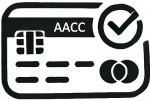How to Pay Off your Credit Card without Spending More
It might seem impossible to pay off a credit card when your cash flow is at zero, but there’s hope. If you find yourself with a maxed-out credit card and no extra income at the end of the month, there’s a strategy that can help you make progress without changing your lifestyle or taking on extra work. This method, known as Velocity Banking, uses smart cash flow management to help you reduce your credit card debt—even when it feels like you don’t have any cash to spare.
Here’s how it works and how you can start paying off your credit card debt today!
The Challenge: Zero Cash Flow and Credit Card Debt
Imagine you’re in a situation where your monthly income matches your expenses. You bring in $3,000 a month, and your expenses—like rent, utilities, food, and transportation—also total $3,000, leaving you with no leftover cash. On top of that, you have a credit card maxed out at $10,000 with a $400 monthly payment.
With no extra money to throw at the debt, how do you get ahead? This is where Velocity Banking comes in.
Step 1: Shift Your Income to Your Credit Card
The first step is to rethink where you’re putting your money. Instead of depositing your income into your bank account, transfer it directly to your credit card. In our example, if you deposit $2,000 of your income into your credit card each month, you’ll immediately see the balance drop. This reduces the average daily balance on your card, which means you pay less in interest.
You’ll still need to leave enough in your bank account to cover expenses that can’t be charged to your credit card, like rent. But for everything else—utilities, groceries, gas—start using your credit card for these payments.
Step 2: Benefit from Lower Interest Payments
Credit card interest is usually calculated based on your average daily balance, so by depositing your income into the card, you’re reducing that balance more quickly, which means paying less interest. Let’s say your $10,000 card balance drops to $8,000 after depositing your income. This lowers the interest charged on the balance. Instead of paying interest on $10,000, you’re paying interest on $8,000, saving you money.
Step 3: Use the Card for Your Expenses
Once your income has been applied to your credit card balance, start using the card to pay for your essential monthly expenses—groceries, gas, utilities, and subscriptions. As you charge these back to the card, the balance will go back up, but the key is that you’re keeping the balance lower for longer, reducing your overall interest charges.
Step 4: Repeating the Cycle
By the time the next month rolls around, you’ll repeat the process. With your next paycheck, deposit another $2,000 into your credit card, bringing the balance down even further. Over time, your balance will gradually reduce while you continue to cover your monthly expenses.
In just two months, your credit card balance could drop significantly. For example, if you start with $10,000 and deposit $2,000 each month, your balance could be reduced to $7,200 by the third month. Each time you lower the balance, you’re cutting down on the interest you’re charged.
Step 5: Create Cash Flow by Eliminating the Payment
One major benefit of this method is that you eliminate the need for the traditional $400 credit card payment. By paying down your balance with your income and using the card for expenses, you satisfy the card’s payment requirements without needing additional cash flow. That $400 is now extra money that stays in the card, further reducing your debt.
Step 6: Build an Emergency Fund Along the Way
As you continue to reduce your credit card balance, you’ll create a small buffer. For example, after several months, your balance might drop to $7,000. This leaves you with available credit that acts as an emergency fund. If unexpected expenses arise—like a car repair or medical bill—you can use the available credit without falling back into heavy debt.
Final Thoughts: Paying Off Debt with Zero Cash Flow
Velocity Banking is a powerful strategy for paying off credit card debt when you’re working with zero cash flow. By simply shifting where you deposit your income and how you manage your credit card, you can reduce your debt without needing to increase your income. Over time, this approach can save you thousands of dollars in interest and help you pay off your card faster.
If you feel stuck with your debt and no cash flow to spare, this strategy could be the solution you need to start seeing real progress.
